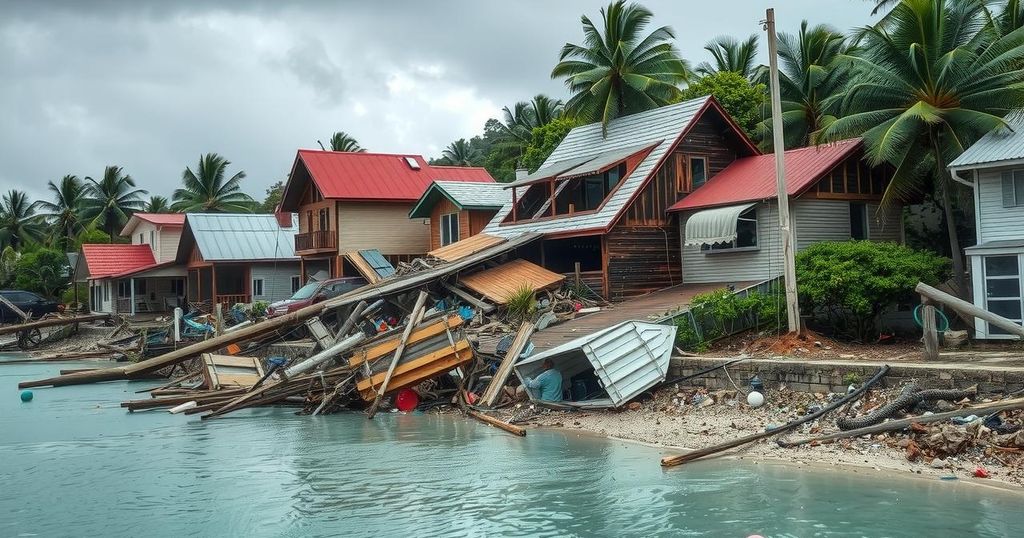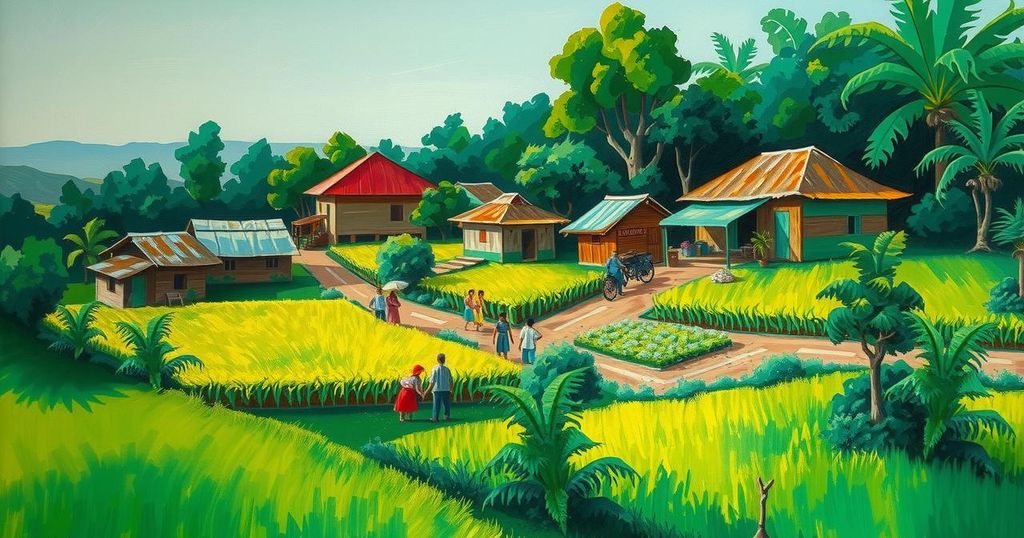Weather
World news
AFRICA, AGENCE FRANCE - PRESSE, ATLANTIC, ATLANTIC BASIN, CHI, COLOMBIA, EMILY CASSIDY, EVACUATIONS, GRANDE TERRE, JESS ZIMMERMAN, LANDSAT, MICHALA GARRISON, NATURAL DISASTER, NATURAL DISASTERS, NORTH AMERICA, PUERTO RICO, RAIN, SOUTH AMERICA, U. S. GEOLOGICAL SURVEY, UNIVERSITY OF, UNIVERSITY OF PUERTO, WEATHER
Marisol Gonzalez
0 Comments
Cyclone Chido: Devastation in Mayotte and its Ecological Implications
Cyclone Chido struck Mayotte on December 14, 2024, causing extensive destruction to homes, vegetation, and infrastructure. Satellite images reveal severe environmental damage, particularly on hillsides near Mamoudzou. The cyclone’s impact on crops threatens food security, while infrastructural damage interrupts essential services. Experts stress the importance of understanding ecological consequences and enhancing disaster preparedness.
On December 14, 2024, Cyclone Chido struck the islands of Mayotte with devastating force. The cyclone, equivalent to a Category 4 hurricane, unleashed hurricane-level winds that destroyed homes, downed utility poles, and uprooted trees throughout the French territory located in the southwest Indian Ocean. The lush green landscapes of the islands were left transformed, marked by extensive brown patches, as vegetation was severely damaged. Satellite imagery captured by the OLI (Operational Land Imager) on Landsat 8 illustrates this stark contrast, presenting the condition of Mayotte’s main island, Grande Terre, before and after the storm.
Professor Jess Zimmerman of the University of Puerto Rico, an expert in forestry ecology, remarked on the substantial impact of Cyclone Chido on the local tree composition, particularly noting the destruction visible on hillsides near the capital, Mamoudzou. Trees situated on steep slopes and at high elevations were particularly vulnerable due to their exposure to strong winds and inclement weather conditions that facilitate soil instability. Reports from Agence France-Presse indicated that a centuries-old giant baobab tree fell onto a restaurant, underscoring the storm’s destructive power. Additionally, agricultural concerns arose as banana trees and other crops were lost, posing a serious threat to the community’s food security.
The cyclone not only affected natural landscapes but also severely compromised essential infrastructure. Airports, hospitals, and road networks sustained damages that disrupted access to electricity, water, and communications across the islands. The European Commission’s satellite assessment highlighted significant infrastructure damage concentrated in the northeastern region of Grande Terre, where the cyclone made its landfall.
The occurrence of cyclones, particularly in tropical regions, has notable ecological implications that extend beyond immediate human impact. The southwest Indian Ocean is prone to tropical cyclones, which can result in extensive environmental damage, particularly to forests and agricultural systems. This case study of Cyclone Chido in Mayotte reveals the intricate relationship between severe weather events and ecological shifts, emphasizing the urgent need for assessments of natural disaster responses and recovery efforts in affected regions. Observations from renowned ecologists provide crucial insights into the potentially lasting effects of such storms on local ecosystems and communities.
In summary, Cyclone Chido’s impact on Mayotte has led to significant ecological and infrastructural devastation. The stark transformation of the landscape, alongside the destruction of vital crops and infrastructures such as airports and hospitals, presents challenges for recovery efforts in the territory. The insights provided by experts underline the necessity for comprehensive disaster preparedness and resiliency strategies to mitigate future impacts of similar cyclones.
Original Source: earthobservatory.nasa.gov




Post Comment